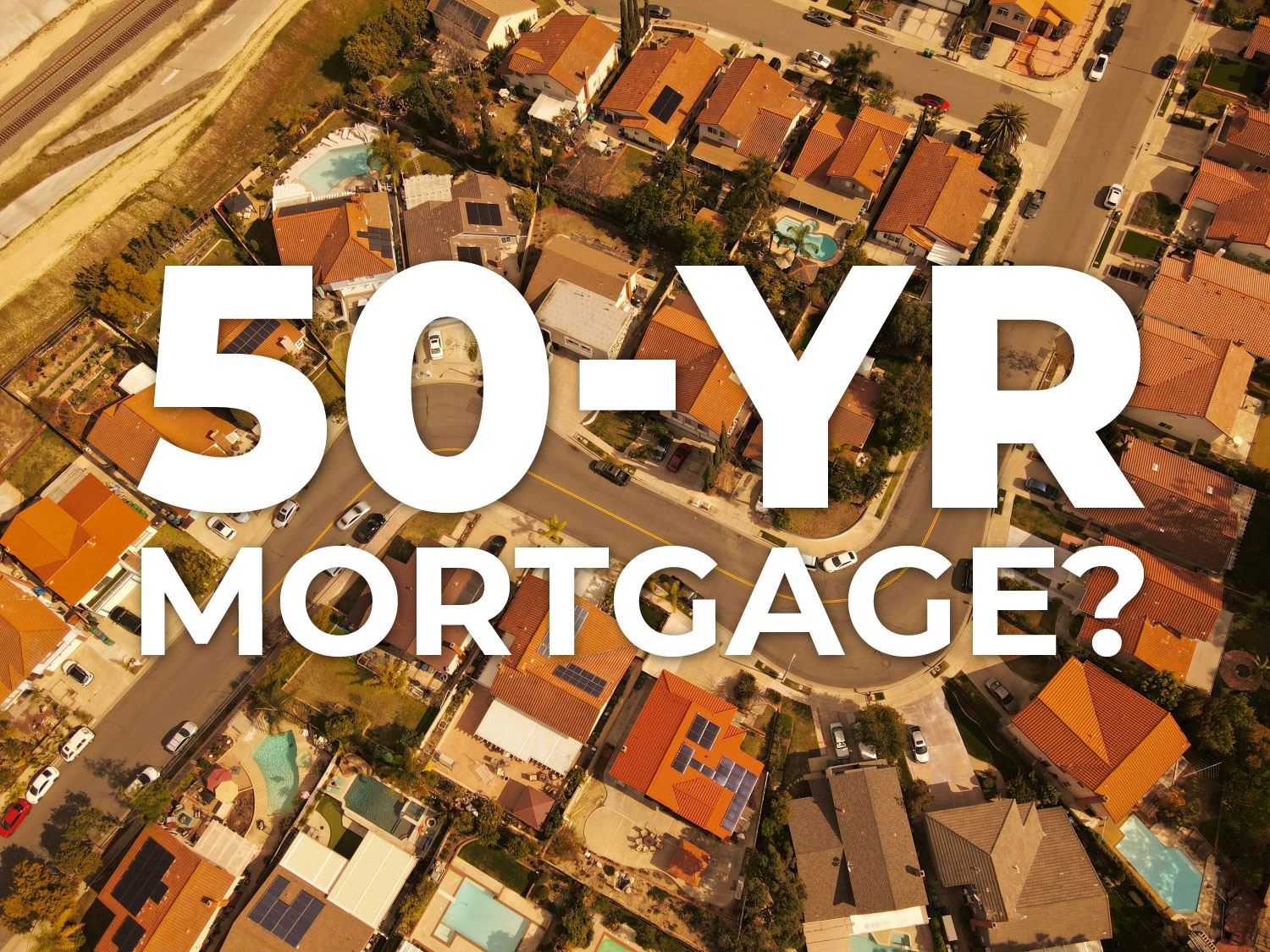
With home prices and interest rates still challenging many buyers, the idea of a proposed 50-year mortgage has been getting fresh attention. A longer loan term could reduce monthly payments and increase affordability — but stretching a mortgage across half a century also comes with significant long-term costs.
Before considering whether this type of ultra-long mortgage could be beneficial if it ever becomes available, it’s important to understand how it might work, what the trade-offs look like, and how it compares to the loan options buyers can actually choose from today.
A 50-year mortgage is an extended-term home loan concept that has been proposed but is not currently approved, standard, or federally backed.
The idea is simple: spread repayment over 50 years instead of 30 or 15 to reduce the monthly payment obligation. However, lower monthly payments typically result in significantly higher total interest costs and slower equity accumulation.
If this product were to be offered in the future, it would amortize over 600 months rather than 360. Because the principal is paid back more slowly, interest remains higher for a longer period. Like other loan structures, a 50-year mortgage could eventually come in fixed or adjustable-rate formats, but lenders would likely have stricter qualification standards due to the extended long-term risk.
Talk of longer mortgage terms usually surfaces during periods when affordability is strained. Rising prices, limited inventory, and elevated rates may prompt discussions about creative financing, including the possibility of a 50-year loan.
At this point, however, the idea is only a proposal. Any real implementation would require further review, regulatory changes, and industry adoption.
Right now, 50-year mortgages are not an available product, and federal agencies do not back them. If the concept were to move forward, it’s possible that specialized lenders in high-cost regions would explore offering them first — but availability would remain limited until broader market adoption.
Understanding whether a 50-year mortgage could be beneficial requires comparing it to traditional mortgage structures.
50-Year (Proposed): Lowest monthly payment
30-Year: Standard balance between affordability and long-term cost
15-Year: Highest monthly payment but least interest paid overall
50-Year: Slowest equity growth
30-Year: Moderate
15-Year: Fastest
The proposed 50-year term could offer lower monthly payments, but at the cost of higher lifetime interest. A 50-year mortgage could potentially double the interest owed compared to a 30-year loan. And, slower equity build affects flexibility for future refinancing, selling, or leveraging home equity.
Spreading payments over 50 years lowers the mandatory monthly payment, which could provide short-term financial relief or allow buyers to reallocate cash.
Lower payments might make room for:
Increasing savings
Reducing other debt
Funding home improvements
Strengthening emergency reserves
A lower monthly payment could help buyers meet debt-to-income ratios and potentially qualify for more home than they could with a shorter loan term.
For buyers who expect to move within a few years, the slow equity build may not matter as much, especially in appreciating markets.
The most notable drawback is the significantly increased total interest paid due to the extended repayment period.
This can limit:
Refinancing options
Ability to sell if the market softens
Access to home equity for renovations or major expenses
Lenders may charge higher interest rates for a 50-year product because of the extended risk.
Because it remains only a proposal, availability — if it ever materializes — is expected to be scarce.
As of 2025, neither Fannie Mae nor Freddie Mac support a 50-year term, limiting access to federal standards and protections.
If a 50-year mortgage were ever offered, extra payments could offset slow amortization without committing to higher required payments each month.
A shorter stay in the home may make the trade-offs more manageable, but long-term homeowners need to consider decade-spanning interest costs.
30- or 40-year terms may offer meaningful affordability without the extreme extension of a 50-year loan.
Lower payments don’t eliminate risks from taxes, insurance, or life changes.
Mortgage products evolve. Keep an eye on how (or if) the 50-year proposal progresses.
Alternative loan structures often emerge when buyers struggle with affordability. A 50-year mortgage could be one way to lower entry costs — though it doesn’t address inventory shortages.
Extending mortgage payments across several decades could push repayment into retirement years, which may conflict with long-term financial goals.
Current federal guidelines restrict maximum loan terms on many products. Any adoption of a 50-year mortgage would require regulatory changes before lenders could offer it widely.
Since the 50-year mortgage remains strictly a proposal, there are many unknowns about how it would be structured.
For buyers who prioritize lower monthly payments, the concept may sound appealing. However, the significant long-term cost and slower equity accumulation are important considerations.
Before committing to any extended-term mortgage — now or in the future — it’s wise to review detailed projections with a qualified mortgage advisor who can walk through the pros, cons, and long-term financial impact.
A 50-year mortgage is only a proposal — not an available loan option.
If introduced, it would offer the lowest payments but the highest long-term cost.
Equity build would be significantly slower.
Availability would likely be limited and rates potentially higher.
Buyers should consider goals, timelines, and long-term finances before pursuing any extended-term structure.
Selecting the right mortgage term is a major financial decision. While a proposed 50-year mortgage could improve short-term affordability, its long-term impact — especially in interest — is substantial.
Before choosing any mortgage structure, consider evaluating all available options with an experienced mortgage advisor. Transparent Mortgage can help you compare scenarios, understand long-term implications, and align your financing strategy with your goals.
Additional news on this topic: